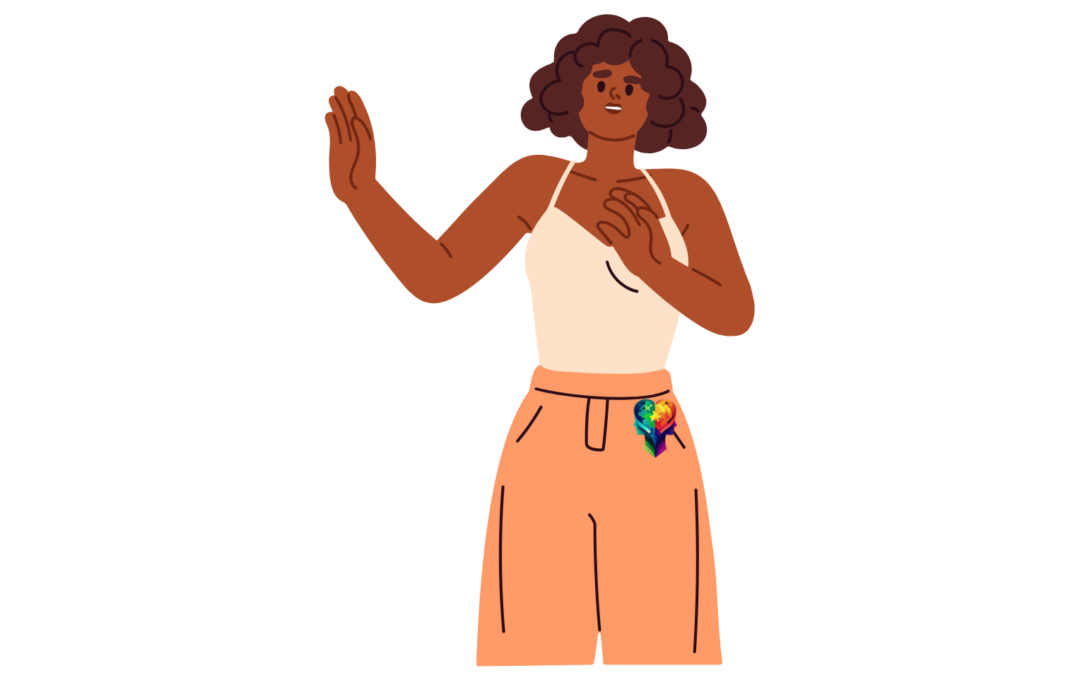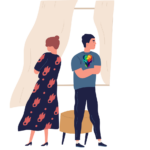Reducing anxiety in autistic adults can be a challenge, but there are effective strategies that can make a difference. In this article, you’ll learn how to reduce anxiety in autistic adults using practical, evidence-based techniques. From understanding anxiety’s root causes to implementing CBT and making environmental adjustments, we provide comprehensive insights to help you or your loved one manage anxiety better.
In this blog post, we’ll explore actionable and supportive strategies to enhance and reduce anxiety in autistic adults’ daily lives.
Key Takeaways
- Anxiety disorders are significantly more prevalent in autistic adults, with up to 50% experiencing an anxiety disorder, necessitating early recognition and intervention.
- Practical techniques such as creating sensory-friendly environments, engaging in self-care, and utilizing cognitive behavioral therapy can reduce anxiety in autistic adults.
- Support from mental health providers, lifestyle changes, and self-advocacy are essential components in managing anxiety for autistic individuals.
Understanding the Link Between Autism Spectrum Disorder and Anxiety
Anxiety disorders are notably more common in autistic adults, with over 20% diagnosed with panic disorder, compared to about 8% in the general population. This significant disparity highlights the need to understand how autism spectrum disorder (ASD) influences anxiety, including generalized anxiety disorder and spectrum disorders. Research shows that up to 50% of autistic adults may experience an anxiety disorder, making it a critical area of concern.
The relationship between autism and social anxiety disorder is multifaceted. Genetic studies suggest a link, indicating that specific genetic variants are associated with both conditions. Additionally, individuals with autism are more prone to obsessive-compulsive disorder and phobic anxiety disorders. These co-occurring conditions can exacerbate generalized anxiety disorder symptoms and complicate treatment.
Attention deficit hyperactivity disorder (ADHD) symptoms can sometimes be mistaken for those of high-functioning autism. Recognizing and treating these overlapping issues is crucial to improving the overall quality of life for those affected.
Anxiety can severely limit an autistic person’s interactions with the world, affecting daily living skills, high functioning, and independence. Recognizing and addressing autism anxiety early can significantly enhance the quality of life for autistic people with high functioning and enable them to function better in social environments.
Recognizing Anxiety Symptoms in Autistic Adults
Identifying anxiety symptoms in autistic adults can be challenging due to the overlap with autism traits. Common symptoms include panic attacks, emotional meltdowns, and even self-harm injuries. Physical manifestations of intense anxiety, such as headaches, stomach issues, and an elevated heart rate, are also common indicators of anxiety.
Behavioral signs like withdrawal from social situations, fidgeting, and obsessive thoughts can point to underlying anxiety. Psychosocial symptoms can manifest as difficulty concentrating, sleeping, and obsessive thinking. Additionally, individuals may experience anxiety and trouble concentrating. However, these symptoms can often be mistaken for typical autism behaviors like rocking, flicking, and pacing, complicating the diagnosis.
Diagnostic tools developed for neurotypical individuals may not effectively capture the experiences of autistic adults. Therefore, recognizing early signs of anxiety or sensory overload is crucial for clinical diagnosis and proactive management of spectrum disorder. Understanding these nuances helps in identifying anxiety and taking timely action to mitigate its impact.
Practical Techniques to Reduce Anxiety in Autistic Adults
A sensory-friendly environment is fundamental to reduce anxiety in autistic adults. Soft lighting and comfortable seating can significantly enhance comfort and reduce distractions. Incorporating sensory tools, like weighted blankets and noise-canceling headphones, helps manage sensory input and alleviate anxiety.
Engaging in regular self-care activities, such as mindfulness and sensory breaks, can be highly effective in managing anxiety and can also help to treat anxiety. Expressive art therapies, including creative writing and music, provide a therapeutic outlet for emotions and negative feelings, calming the nervous system. Moreover, implementing routines and visual schedules offers predictability, which can reduce anxiety related to unexpected changes.
Occupational therapists can tailor a sensory diet to regulate sensory needs throughout the day. Social stories and visual supports also clarify social expectations, helping autistic individuals navigate social situations with less anxiety.
Cognitive Behavioral Therapy (CBT) for Anxiety Management
Cognitive behavioral therapy has proven effective for reducing anxiety in autistic adults, with over 70% responding positively. CBT focuses on modifying distorted thought patterns, which can be particularly beneficial for autistic individuals facing unique social challenges when in social situations.
Modifications to CBT for autistic clients may involve longer therapy durations, the use of visual aids, and specific communication methods. These adaptations help address the unique needs of autistic individuals, making the therapy more effective. Current trends in CBT also integrate mindfulness practices and acceptance strategies to better cater to autistic clients.
CBT enhances self-awareness, aiding autistic adults in understanding their emotions and improving their coping strategies. Integrating cognitive-behavioral strategies into social skills training further helps challenge negative thoughts and repetitive behaviors that may hinder social interactions.
Medication Options for Treating Anxiety
Medication can be a viable option for reducing anxiety in autistic adults, though it’s essential to approach it cautiously. Common medications include Selective Serotonin Reuptake Inhibitors (SSRIs) like fluoxetine, Luvox, and sertraline, which may effectively address anxiety symptoms. Beta-blockers and Buspirone are also used to manage anxiety in the general population.
However, there is insufficient research to establish a proven protocol for which medications are most effective for autistic individuals. Therefore, a tailored approach is recommended, with medical professionals monitoring the use of antidepressants and other medications to manage side effects and ensure the best outcomes for autistic persons.
The Role of Social Skills Training
Social skills training plays a crucial role in managing anxiety for autistic adults. Programs like PEERS (Program for the Education and Enrichment of Relational Skills) are designed to help autistic individuals develop and practice social skills. These structured sessions cover various aspects of social interaction, from casual conversation to dating.
Techniques like modeling and role-playing are core components of social skills training. They provide a supportive environment for practicing social scenarios. This hands-on approach helps enhance confidence and ease anxiety in real-world interactions, especially for people with developmental disabilities.
Support from Mental Health Providers
Consulting mental health providers experienced in autism is essential for effective anxiety treatment. Resources such as the National Alliance on Mental Illness (NAMI) and directories of medical providers like Psychology Today can help find clinicians trained in autism care. Primary care medical providers can also offer referrals to specialists who understand autism-related anxiety.
Finding suitable anxiety treatments for autistic individuals can be challenging, emphasizing the need for more targeted research and guidance. Adaptations to treatment must be prioritized to meet the unique needs of autistic individuals. Online resources like the National Autistic Society and the Anxiety and Depression Association provide valuable guidance in finding appropriate anxiety and depression treatments.
I am a neurodivergent therapist and coach specializing in working with people on the autism spectrum. I have seen firsthand the importance of understanding and addressing anxiety in individuals with autism. Many times, autistic individuals are misdiagnosed or have co-occurring conditions that can complicate their treatment. I intend to help people get the support they need.
Lifestyle Changes to Manage Anxiety
Incorporating lifestyle changes can significantly help manage anxiety in autistic adults. Regular physical activity like swimming can reduce tension and lower anxiety levels. Establishing a routine with predictable sensory experiences helps minimize anxiety in daily life.
Artistic activities like drawing and music provide therapeutic outlets for emotions, helping manage anxiety. Journaling is another effective method for processing emotions and recognizing triggers, allowing for better management of anxiety.
Creating an Anxiety-Reducing Environment
Creating a supportive environment is key to reducing anxiety. Sensory-friendly spaces with soft lighting and comfortable seating can significantly enhance comfort. Sensory management strategies, such as noise-canceling headphones, help alleviate specific triggers.
Incorporating routines and visual schedules fosters predictability, lessening anxiety about unexpected changes. Tools like timers or visual reminders improve time management and transitions between tasks, reducing anxiety.
Family and Caregiver Support Strategies
Family and caregiver support is crucial for managing anxiety in autistic adults. Educating families about autism and anxiety can significantly trigger anxiety and improve support and understanding at home. Effective communication between caregivers and autistic individuals can enhance understanding and reduce anxiety.
Caregivers play a pivotal role in observing behaviors to identify anxiety triggers. Proactive intervention and reinforcement of social skills learned during training help autistic individuals practice these skills daily.
Utilizing Technology and Apps
Technology offers innovative tools to manage anxiety. Apps like Molehill Mountain help autistic individuals understand and manage their anxiety by tracking triggers and symptoms. The app provides daily evidence-based exercises and practical tips to improve self-management of anxiety.
Virtual reality environments also enhance social skills training by providing low-pressure environments for practice. These technological advancements offer new ways to support autistic adults in managing social anxiety well.
The Importance of Self-Advocacy
Self-advocacy is vital for autistic individuals in managing anxiety. It equips them with the ability to voice their needs and preferences, ensuring they don’t rely solely on others to make decisions for them. Involving autistic children and adults in discussions about their anxiety management can empower them and enhance coping strategies.
Self-advocacy also helps challenge societal biases and misconceptions, promoting a more accurate understanding of autism. By expressing their preferences for language and identity, autistic individuals can assert control over how they are described and embrace their unique identity.
Resources for Further Help
Numerous organizations provide resources and support for autistic people and individuals managing anxiety. The Autism Society offers advocacy and support to the national autistic society through a network of local affiliates nationwide. The Asperger/Autism Network provides resources and community support for individuals and families affected by autism.
Organizations like the Autistic Self Advocacy Network (ASAN) and the National Autism Association focus on advancing the rights of autistic individuals and promoting safety within the autism community. Autism Acceptance Week is a time to encourage acceptance and understanding of autism. It’s held in the last week of March, leading up to World Autism Autism Awareness Day on April 2 each year.
These organizations play crucial roles in providing resources, support, and advocacy tailored to the needs of autistic adults facing anxiety.
Summary
Summarizing the key points, we’ve explored the high prevalence of anxiety in autistic adults, the importance of recognizing symptoms, and various strategies to manage anxiety, including practical techniques, therapies, medications, lifestyle changes, and support from families and mental health providers.
By incorporating these strategies, autistic adults can significantly experience anxiety and improve their quality of life. The journey towards managing anxiety is ongoing, but with the right tools and support, it is certainly achievable for autistic people.
Frequently Asked Questions
What is the best therapy for autism anxiety?
Cognitive Behavioral Therapy (CBT), particularly Exposure and Response Prevention therapy (ERP), has demonstrated the greatest effectiveness in addressing anxiety in individuals with autism spectrum disorder. Therefore, ERP is recommended for managing autism spectrum disorder-related anxiety.
What are common symptoms of anxiety in autistic adults?
Common symptoms of anxiety in autistic adults include panic attacks, emotional meltdowns, self-injury, headaches, stomach and deep breathing issues, and an elevated heart rate, along with behavioral signs like social withdrawal, fidgeting, and obsessive thoughts repetitive behaviors. Recognizing these symptoms can facilitate more effective support and intervention.
What medications are commonly used to treat anxiety in autistic adults?
SSRIs such as fluoxetine, Luvox, and sertraline, along with beta-blockers and Buspirone, are commonly prescribed to treat anxiety in autistic adults. Each option may cater to different needs, so consultation with a healthcare professional is advisable for personalized treatment.
How can families support autistic adults with anxiety?
Families can effectively support autistic young adults with anxiety by educating themselves on autism and anxiety, maintaining clear communication, identifying triggers through observation, and reinforcing learned social skills. This approach fosters an understanding and supportive environment.









